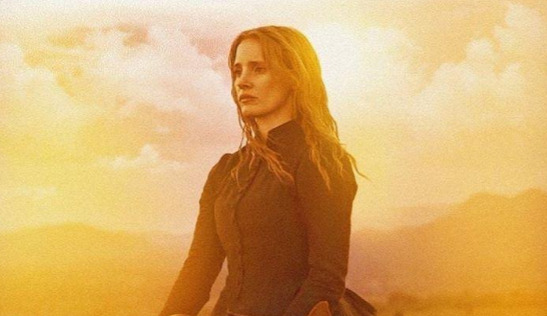The real Caroline Weldon was also a more interesting person than the version of her that Chastain plays in the film. Where Chastain’s Mrs. Weldon is a widow, the real Weldon’s husband divorced her when she ran away with a married man and bore his child. (Her son accompanied her to “Indian country,” another historical detail that’s conveniently written out.) The Weldon of the film insists she’s an artist, not an agitator, but the real Caroline Weldon was a member of activist group the National Indian Defense Association, and came to the Great Sioux Reservation specifically to fight the Dawes Act, which would divest the Sioux tribes of most of their lands. In the film, Weldon comes to her political awakening more gradually through her relationship with Sitting Bull—played here by Fear The Walking Dead’s Michael Greyeyes—whom Weldon initially approaches with a request to paint his portrait.
Making Weldon into a relatively passive character may have been a conscious attempt to avoid the white savior trope mentioned above, or maybe a device to give her character more of an arc. Either way, after her initial, seemingly impulsive decision to leave her comfortable life behind and journey West, she doesn’t do things so much as things happen to her. This approach does have one upside in that it refocuses the audience’s attention on Sitting Bull, a cynical yet mischievous man who’s the most interesting character in the movie. But the film also continually undercuts the romance that initially seems to be developing between Weldon and Sitting Bull. Not that romance is the only worthy motivation a character can have, but damp fireworks don’t make for much of a show.
It’s a lovely film to look at, with cinematography that vividly captures both hue and saturation, from the intense yellow and purple paint in the railroad dining car where Weldon first meets the film’s villain to the wispy pastel blues and pinks of a Dakota sunset. But despite the sensitivity of its storytelling, and Chastain’s career-defining passion for playing headstrong, independent women like Mrs. Weldon, it also never really comes to life. Where its real-life inspirations strode bravely into history, Woman Walks Ahead seems content to take an aimless stroll.

